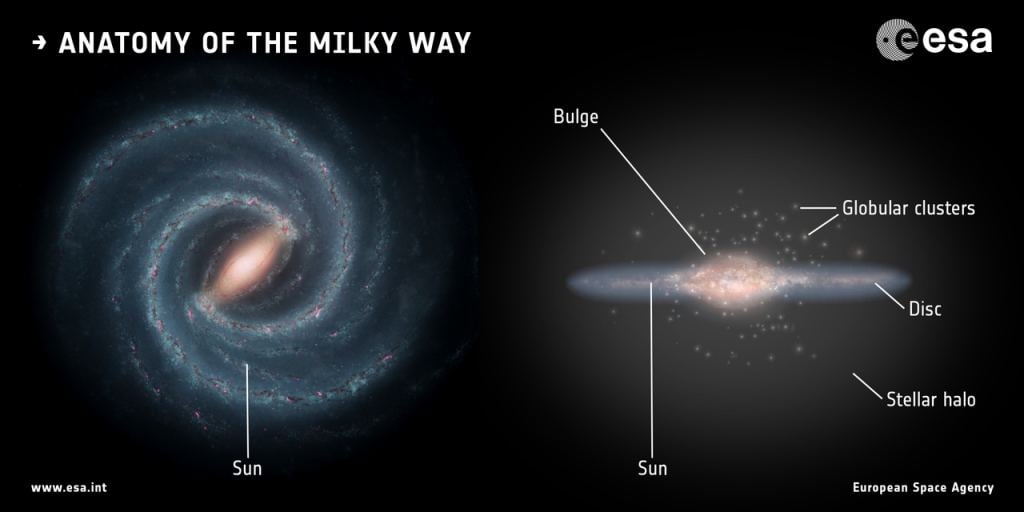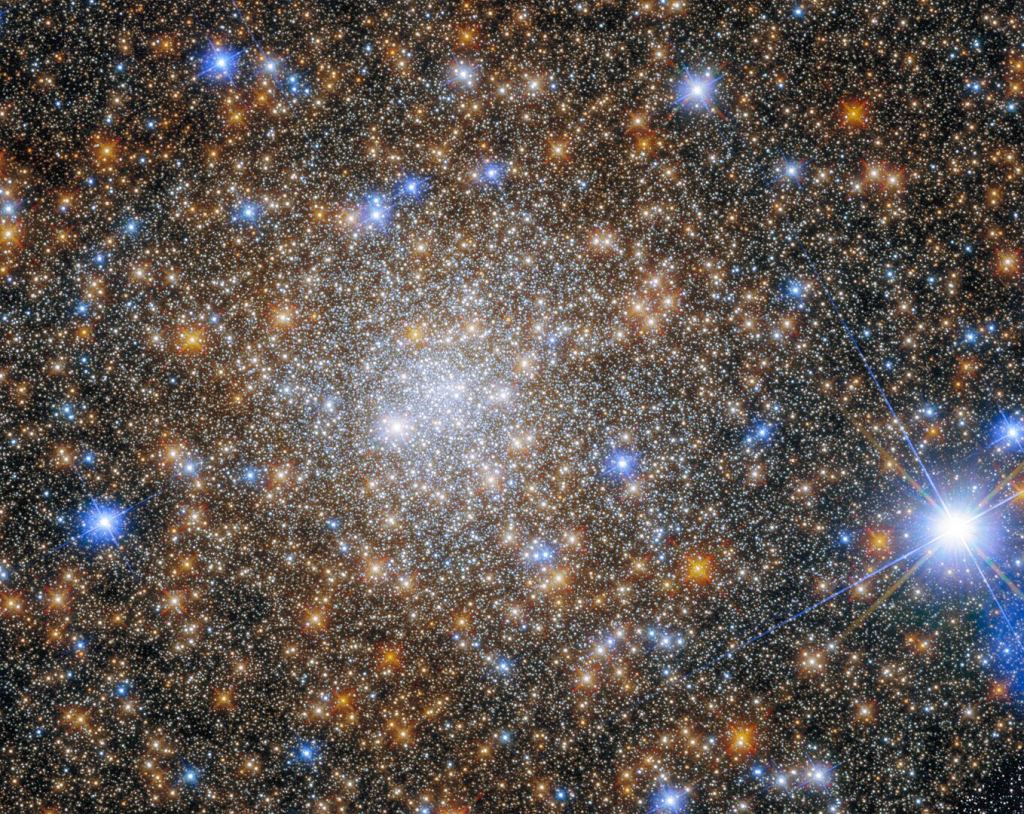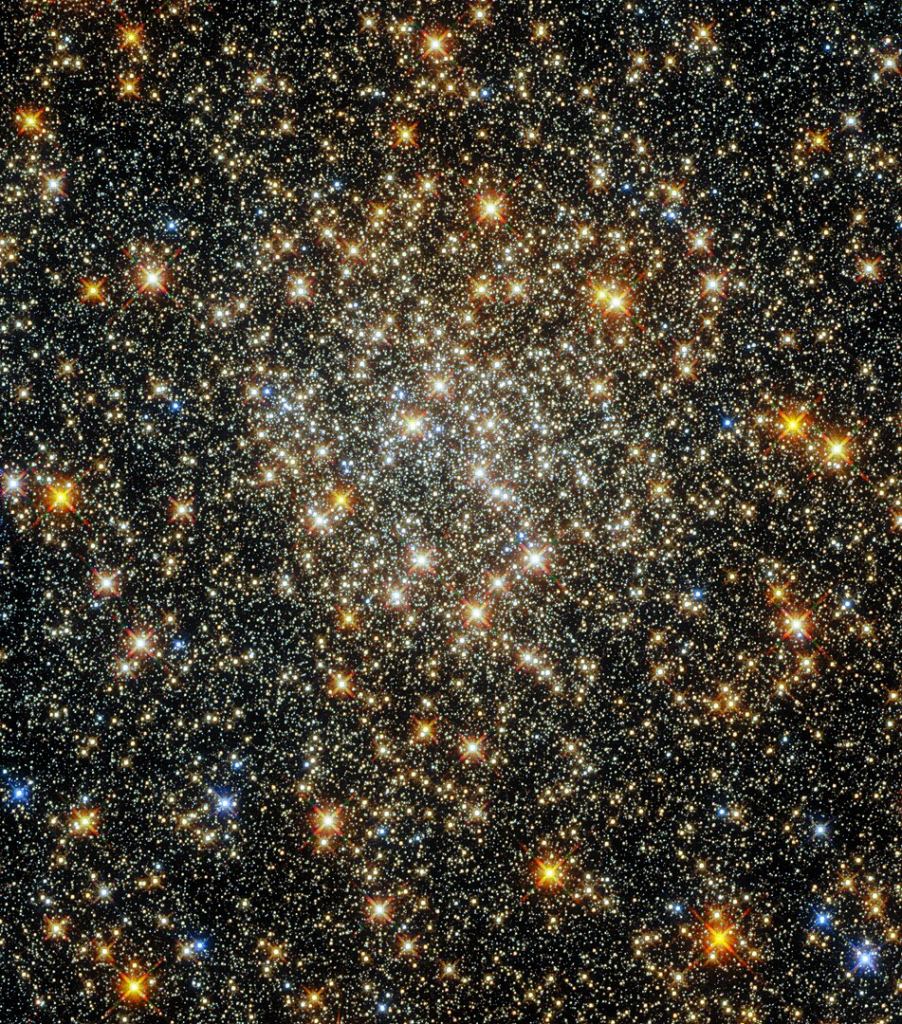Our galaxy has about 200 Globular Clusters (GCs,) and most of them are in the galaxy's halo. Astronomers think most GCs were taken from dwarf galaxies and merged with the Milky Way due to the galaxy's powerful gravity. That explains why so many of them are on the outskirts of the galaxy. But they're not all in the halo. Some are towards the Milky Way's galactic bulge. What are globular clusters doing there?
Globular Clusters (GCs) are spherical associations of stars bound together by gravity. The smaller ones have tens of thousands of stars, and the more massive ones can hold millions of stars. Their stars are typically older and have low metallicity, and in our galaxy, most of them are in the galactic halo.
But the Hubble imaged some GCs that are near the Milky Way's galactic centre.
Globular clusters are ancient. They likely formed between 10 and 13 billion years ago when the Universe was much younger. They're found in all types of galaxies, and the Milky Way has something like 200 of them. They're some of the Milky Way's building blocks, and it's the same in other galaxies.
Stars in GCs all formed from the same gas cloud. Since the stars are old, many of them are red and bloated and have left the main sequence behind. Any short-lived stars that formed in GCs—like blue giants—are no longer prominent.
Much about globular clusters is still mysterious, though astronomers continue to make progress in understanding them. The Hubble Space Telescope has made a large contribution to our growing understanding of GCs since it first gained its vantage point in low-Earth orbit over 30 years ago.
One Hubble observing program was directed at GCs near the galaxy's center. It was called "Opening the Window on Galaxy Assembly: Ages and Structural Parameters of Globular Clusters Towards the Galactic Bulge." The title explains the program. The idea is to understand what role GCs played in the formation and evolution of the Milky Way.
But gazing toward the galactic center is challenging. The region is shrouded in gas and dust that blocks some light and diffuses some light. Fortunately, infrared light is less affected, and this is where the Hubble comes in. The observing program combined images from Hubble's Advanced Camera for Surveys and the Wide-Field Camera 3, which both sense near-infrared (NIR) light, with other pre-existing images.
The program gave us great images of these clusters and has led to a number of papers examining GCs near the Milky Way's center.
Djorgovski 1 is another GC that's found its way into the galactic bulge, close to the Milky Way's center. Djorgovski 1's stars contain hydrogen and helium, but not much else, and the cluster is one of the most metal-poor clusters in the inner galaxy.
The Hubble observing program and the papers it spawned taught us a few things about the GC in the galactic center or bulge. One of the papers showed that two GCs, Djorgovski 1 and Terzan 10, are not actually part of the bulge. Instead, they follow typical halo orbits and are just near the bulge at this time. That paper called the pair of GC 'Halo intruders.' Both of these GCs are faint, and research suggests that's due to mass loss as their trajectories take them repeatedly across the bulge and disk over many orbits.
Palomar 6 has another back story.
At least some of the GCs in the galactic center formed there. A 2021 paper showed that Palomar 6 shares the same metallicity as some other GCs in the region, including M62. That paper concluded that Palomar 6 is about 12.5 billion years old and probably formed in the bulge in the Milky Way's early days, along with several other GCs.
Globular clusters look every bit like nature is a jeweller that arranged all these stars just so we could be enchanted by them. That's nonsense, of course. We're natural beings, and we find natural patterns pleasing.
But they're more than just visually pleasing. They've played a role in how the Milky Way came to be the galaxy it is today, and GCs are an ongoing research topic in astronomy. Many things we thought we knew about them have been overturned as our technology and science improve. For instance, we used to think that they contained a single population of stars that formed from the same cloud and have the same metallicities. But now we know GCs can have multiple, chemically distinct populations.
Surprisingly, astronomers have also found that there's a mass correlation between GCs and a galaxy's supermassive black hole (SMBH.) In lenticular and elliptical galaxies, the mass of the SMBH is often very close to the combined mass of the GCs in the galaxy. The authors of this paper aren't sure why that is, but it might be because the growth of both SMBHs and GCs is associated with mergers. Galaxies that have undergone recent major mergers may have anomalously large SMBHs and GCs.
The science behind globular clusters is intriguing, and there are still a host of unanswered questions. What will we find out next? Who knows.
But at least they're gorgeous, so while we wait for a better understanding of these visually stunning stellar arrangments, we can enjoy their beauty.
 Universe Today
Universe Today




